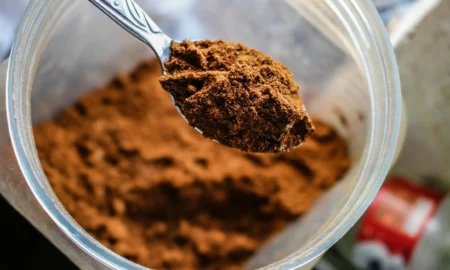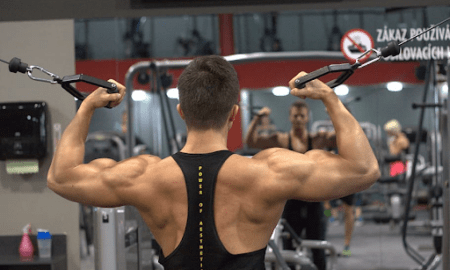Q: I’ve been training pretty seriously for about five years. A number of people at the gym have told me that I should compete. It’s something that I’ve had in the back of my mind for many years, but now I’m giving it serious consideration. I have several issues. First, I’ve never been to a bodybuilding contest. I understand that there’s usually a morning show and a night show, but how exactly does it work? Second, I read IRON MAN and several other bodybuilding magazines. I don’t see myself in the same ballpark as the IFBB pros. Am I wasting my time trying to compete? And finally, to be very honest, my diet is horrible. I take supplements and make sure I get plenty of protein, but I eat a lot of fast food, pizza and sweets—a lot of junk. I’ve tried the “bodybuilding diet” several times and couldn’t hang with it. Do you have any advice for someone like me?
A: Ahhh. You’re giving me flashbacks to when I was getting ready for my first contest. Man, that was an exciting time. I, too, had people telling me I should compete. And, bodybuilding was something that I had always admired. When I joined my first gym, the Texas Bodybuilding Gym in Stafford, Texas, in 1982 and got serious about weight training, I thought maybe someday I could be muscular enough to step onstage and not look out of place. Little did I know that making a commitment to compete in the ’83 NPC Texas Timberland Classic in Nacogdoches, would set my life on a course that would land me on the cover of IRON MAN on the cusp of my 50th birthday.
The first thing that you should do is attend a show. You can go to IronManMagazine.com, click on contests, and then click NPC Men under 2009 schedules. Another good place to look for an amateur contest in your area is on Bodybuilding.com. Find a contest and attend both the prejudging and the night show. You might want to check with the promoters to see whether they allow noncompetitors at the weigh-in. If they do, go to the weigh-in and watch and listen. You’ll be much more at ease for your first show if you know what to expect at the weigh-in. Seeing what the competitors look like offstage may also be very encouraging to you.
At a bodybuilding contest most of the judging occurs during the prejudging. Although rounds of judging vary a bit from one organization to another, NPC contests are very uniform in the way the prejudging is conducted. The first round is symmetry. All of the contestants in a weight class come out onstage and perform quarter turns. The judges are looking for balance, proportion and the size and shape of the muscles. After the judges have seen enough, the contestants leave the stage. The second round is free posing. Each athlete comes out individually and performs a 60-second posing routine that should showcase the strengths of his or her physique.
After each contestant has performed an individual posing routine, the whole weight class comes back onstage to be compared doing the mandatory poses. That’s called the muscularity round. When that’s completed in an amateur contest, the judges give each athlete a final placement. At that point the scores are tallied, and the judging for that weight class is essentially finished. In some cases, such as when a class is tied or is extremely close, the judges may rescore the class at the night show, but it’s not very common. At the night show, also known as the finals, athletes perform individual posing routines to music of their choice. In amateur shows the routines aren’t judged, although many contests give a “best poser” award to encourage competitors to put a lot of work and imagination into their routines. At some of the larger shows the posing routines at the finals may be limited to only the top five competitors in each weight class.
The first show you attend can be quite a learning experience. Watch how the good competitors stand in the symmetry round, how they move in the free posing and how they display their physiques in the muscularity round. Take note of what wins.
I had the good fortune of seeing Lee Labrada onstage at the first show that I attended. Lee was an amateur at that point, but he had a fantastic physique, and his posing was already true artistry. At that particular contest—the ’83 NPC Southwest Classic—Lee wasn’t lean enough. He lost to Jay Bonnet, who was ripped to shreds. I saw not only great posing and stage presence but also what it takes to win. I watched all of the open classes as well as the novice classes. I came away thinking, “I might not be the biggest guy up there, but I can come in ripped.” It gave me the confidence to commit 100 percent to competing in my first show. I also saw some great posing routines at the night show. I made notes of poses that I wanted to try to put into my routine and how the good posers moved from one pose to the next. Although I wasn’t very big, by any stretch of the imagination, I was determined to emulate the best.
Another thing that I learned at the ’83 Southwest Classic was the difference between amateur competitors and IFBB pros. Samir Bannout guest-posed at the show. I’d never seen so much muscle on a human being. It was shocking. There were some very very good athletes in that contest—four went on to win the NPC Texas Championships—and Samir dwarfed everybody. Not only was he huge, but he was also in fantastic condition. After he posed, he stepped to the microphone and apologized for not being in better shape. I was blown away.
My point is, don’t compare yourself to the IFBB pros you see in the magazines. In contests below the NPC national-qualifier level there will almost never be anyone with the size of an IFBB pro competing. Even at the national-qualifier level it’s very uncommon to see a bodybuilder that good. That’s another reason you should attend a local show. You need to see what normal amateur competitors look like. And keep in mind that athletes usually look considerably bigger onstage—another reason that you should try to attend the weigh-in. You don’t have to look like Dexter Jackson to be able to compete in a novice contest.
Now, on to your final issue: the diet. I know exactly what you’re talking about. I grew up eating Southern fried food, drinking sweetened iced tea and having dessert with every meal. I ate hamburgers like they were going out of style. I loved pizza, sugar-laden soft drinks and candy. Fortunately for me, I had a fast metabolism and I was always so physically active that I was very lean throughout high school and college. Having a real job slowed me down, and I actually had to diet for my first bodybuilding show. It was 180 degrees from my normal eating habits—excruciating.
What kept me on the straight and narrow was the idea that I was going to step onstage in a little pair of posing trunks next to a bunch of guys who were carrying more muscle than I was. It wasn’t going to be like taking your shirt off at the beach. Those guys were going to be in great shape. I knew that to have a chance to place, I had to be shredded. I’d seen Jay Bonnet beat Lee Labrada at the Southwest Classic. I’d seen what it took to win, and it wasn’t just muscle size.
I’m telling you right now that nothing will motivate you to stay on a strict diet like committing yourself to a physique competition. Over the years I’ve seen so many people who I didn’t think had any business competing in a show commit to the contest, get in the best shape of their lives and place well, perhaps win. You can do it.
Get your NPC membership, and send in your entry form and fee for the contest you want to compete in. Then tell all of your friends and family. You’ll probably have some haters. People who think they know bodybuilding may even laugh in your face—that happened to one of my clients, but she got the last laugh. Just do not be deterred. Do everything in your power to be 100 percent prepared for your competitive debut—and let me know if you have any more questions.
Editor’s note: See Dave Goodin’s blog at www.IronManMagazine.com. Click on the blog selection in the top menu bar. To contact Dave directly, send e-mail to [email protected]. IM




















You must be logged in to post a comment Login